Thursday, September 28th, 2017
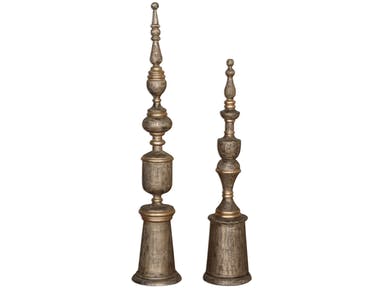
Uttermost Accessories Nalini Antique Gold Finials S2 18847
India is one country that never fails to captivate. Those who were lucky enough to live or even just visit this nation know the bespoke beauty that Indian homes offer. It is so easy for people to fall in love with this country’s rich culture and traditions.
What are the chances that your home’s architecture has Indian features? Don’t fret if you have a regular-looking home but would like to transition to a beautiful Indian habitat. What you need is an artistic flair that would turn your house into the most exotic, complex, and enchanting home on your block.
Use Lots of Colors
The more varied and bright the colors, the better. Indian interior design focuses on a tempting and vast palette. Don’t overdo it, though, or you would end up with a chaotic place instead of an interesting, multi-colored home.
If you want to play safe, then go for the bicolor theme. This is when you combine a neutral shade (base color) and accents of primary colors.
Learn to layer the different colors as well as the other design elements that you would include.
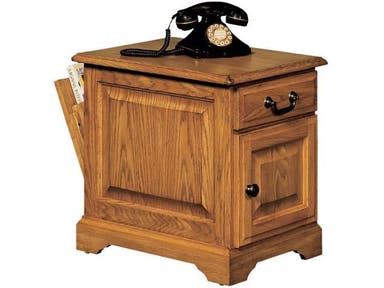
Yes to wood, indeed, with this lovely Winners Only Living Room Heritage End Table.
Yes to Wood
More so, solid wood furniture.
Solid wood is an element of every Indian home. Invest in durable wood pieces if you want to copy an authentic Indian interior design. Pick traditional pieces complete with carved legs, armrests, and inlay work in ivory or metal.
Have one or a pair or ornate centerpiece then complement them with understated furniture pieces. There is a huge selection of Indian furniture to choose from like footstools, wooden chests, and bird cages.
You should also add a decorative cabinet or two. Keep in mind that Indian cabinets are a fusion of function and aesthetics. Find pieces that have embellishments and wood inlay working such as metal, stones or mirrors.
Informal Setting
While Indian interior design is vibrantly elegant, there should always be a spot where family members and visitors are able to spend a laidback evening. These informal spaces are there for interaction. Use sofas, high chairs or diwan (Hindi term for divan).
Colorful Fabrics
And handspun as much as possible. India, after all, is known for its historical and beautiful handspun fabrics.
There are also a lot of ways to creatively decorate your home with these exciting fabrics. They can be used as flowing drapes for your windows. They can also become the canopies to four-poster beds, or just simple sheets for you to sleep on.
Other textiles such as silk can also be considered.
The more intricate the patterns are on these fabrics, the more Indian they would look like. Motifs and patterns are also features of every Indian fabric. There are Indian versions of the paisley patterns, mandala motifs, and bird, flower, and animal symbols.
Paintings and Statuary
There is a huge selection of Indian artistic styles. Just imagine the Rajasthani miniatures, the Tanjore golf-leaf paintings, and the Madhubani paintings and you know just how colorful and awesome Indian art is.
Huge paintings can become your centerpieces. The smaller pieces, on the other hand, can be grouped to create a unique gallery wall. This would automatically become your accent wall.
Scenic Views
And what is an Indian home without the scenic views? An interior design that is deeply rooted in Indian culture, architecture, and traditions is a style that makes good use of nature. While the home may offer a palatial feel, it is common to find potted green plants inside. The colossal columns are also dramatized with stencil designs and some hanging plants.
The exotic windows also look out to a lush garden that’s filled with spices and herbs.
Tags: Indian homes, Indian interior design, Indian interiors, McCreerys, McCreerys Home Furnishings
Posted in Interior Design 101, Interior Design Elements, Interior Design Themes | Comments Off on Spellbinding India: Breathtaking and Vibrant Interiors
Wednesday, September 27th, 2017
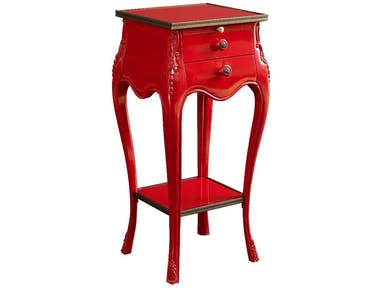
Fine Furniture Design Living Room Accent Table 1160-961: A lovely focal piece
Designers – whether in the world of fashion or interior design – know that colors bring life to creations. They do not only do this, these hues can also affect human emotions. Colors can inevitably influence people’s feelings, even their perceptions.
Colors can make people interested or disinterested; they also have the power to captivate or cause boredom, and they can also motivate. Interestingly, adults perceive colors not only physically but also psychologically.
Colors could also be linked by humans to certain experiences. There are certain colors that remind people of their childhood or hues that they associate with a pleasant or even a traumatic experience. The more pleasant hues are the ones that people tend to gravitate to.
While color choice tends to be subjective, there are certain hues that work a certain way. Relaxation is often brought about by lighter colors while darker ones could either make you feel more active or homey.
Energizing Hues
If you want to be woken up, stimulated, or to feel more energetic, then you should look for bright hues. Of course, you must remember the chief function of the room where you are going to use the colors at.
Color appropriateness is vital to room functions. For instance, if you want a room to sustain stimulating activities (e.g. a family room), then go for heavy and more attractive hues such as green, red, pink and yellow tones.
These colors help promote excitement and even happiness. Ophthalmology theories suggest that red can even stimulate the eye nerves. A psychological factor about the color red is that it can also be attributed to violence and blood. This is why you would feel like you’re in a fight or flight mode when you’re in a red room.
Playful Hues
There are also colors that do not excite as much but would also not induce sleep. These playful hues go beyond the common blue or pink. Don’t just settle for pastels when you are expectant. Go for more playful tints such as seafoam green or robin’s egg blue.
There are also more sophisticated shades of beige that could excite the senses. Consider also how you will effectively use black or white or even a combination of the two.
As for your baby’s nursery or toddler room, know that babies are able to perceive colors from the fourth month onwards. Moreover, they are also able to perceive contrast in colors. This means that they will, somehow, be able to appreciate the colors that you put inside their rooms and how each hue interacts with its neighboring colors.
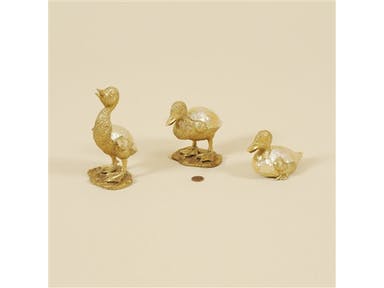
Maitland-Smith Accessories Set Of Three Satina Finished Cast Brass Ducklings, Yellow Mother Of Pearl Inlaid Accents 1054-264
Soothing Hues
Lastly, there are the calming colors. These are those hues that make you relax and think of tranquility and peace. Green is an amazing choice for relaxation. Remember that the color spectrum has two separate ends. The short wavelength is where blue resides while on the other end is red. Right in the middle of this spectrum is the color green.
In between the two extreme sides is where the human eye relaxes the most. So go ahead and choose green in different shades. Choose green for your bedroom, even for the bathroom and the reading areas.
Must-have Paint Tools
For your home’s color makeover, make sure that you have the right set of tools. Here’s a concise list –
Tags: color choices, color psychology, effects of colors, McCreerys, McCreerys Home Furnishings, moody colors, paint colors
Posted in Color Schemes, Interior Design 101, Interior Design Elements | Comments Off on Moody Colors: Energizing, Playful, and Soothing Hues
Tuesday, September 26th, 2017
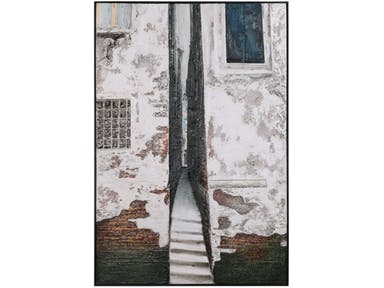
What better way is there to personalize your home than to add a beautiful artwork? Featured here is the Uttermost Accessories Coming Home Hand Painted Art 31318.
Have you noticed how spotless most celebrity and designer homes are? Has it ever crossed your mind that these homes may look great but are not exactly the kind of home that you can live in? These thoughts are perfectly normal. After all, we don’t all live a party-every-night kind of lifestyle.
If you want to start designing a home where a family can live comfortably, then you better start from scratch. Whether your family lives in a small apartment, a townhouse, or a bungalow, you have to commit to begin this project at ground zero.
You could also be a family or an individual who still does not own a lot of furnishings so now you’re wondering how to fill up your space with more stuff. It shouldn’t be surprising that you also want all things vintage or old-looking if you grew up in a traditional home. Rather than take furnishings from your parents’ home, why not invest in your own?
Go ahead and buy your own chairs, decorative items, even your kitchen appliances. One paycheck after another, start buying stuff for your home. Call this your furniture budget or furniture fund. Get ideas from magazines but make the projects doable such as turning a sewing machine base turned into a workstation.
For the major furniture, of course, you have to make a careful move before you come up with your final decision. Remember that you will be living with these pieces of furniture for a long time so it is best to invest in just a few pieces. They may be few but they should be durable enough to last for many, many years.
Little by little, you will soon see that you have built a home according to your liking. It is also a space that you worked hard to design as each accessory or furnishing was carefully thought through.
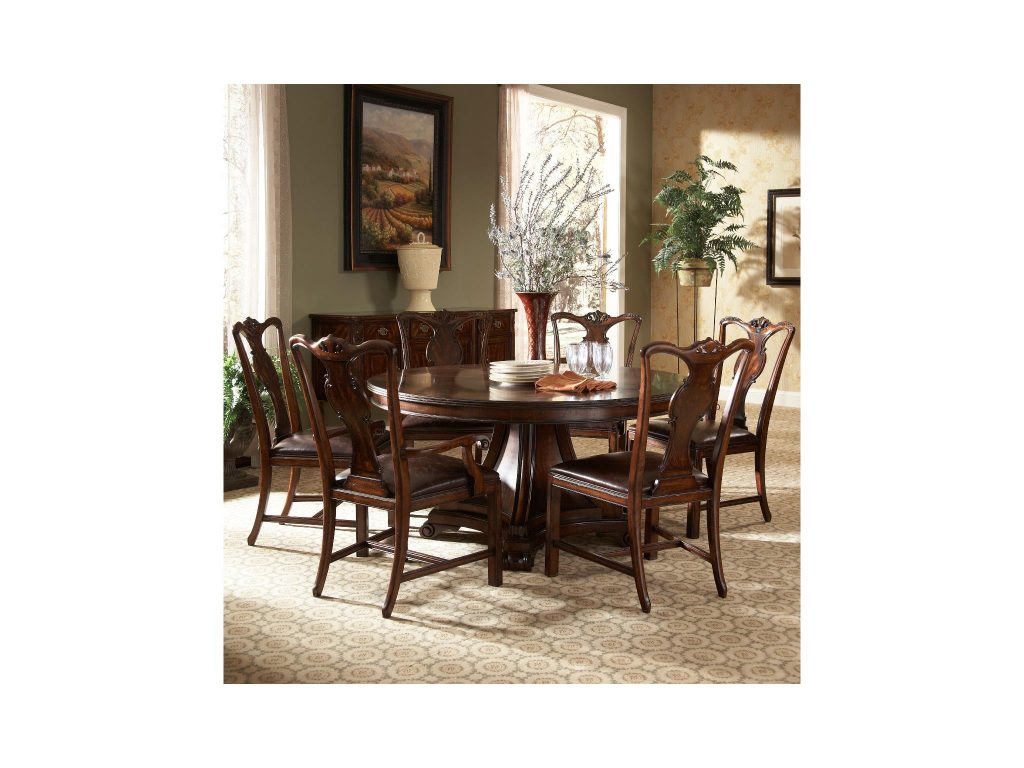
Featured: Fine Furniture Design’s Hyde Park roundtable. Make your place look homier with the addition of flower vases and greenery.
Stack the Books
A great way to personalize and make your space look lived in is to display some book collections. Have your stack of books occupy a special spot in your living area. This could be at the center of your living room. To have this collection turned into your focal point, hang a lovely piece of artwork above the stack.
Allow a few noticeable pieces to mingle with this art and book shrine. Have a lovely wooden chest displayed in the same room with a few sitting pieces. White walls will emphasize this lovely ensemble to be enjoyed by family and friends.
Invest in Art and Heirloom Pieces
You might have come to a point when you also realized that your monthly paycheck is taking you nowhere. Rather than buy designer clothes or bags all the time, as these are dead investments, find some heirloom pieces that you can place inside your livable home.
These pieces would increase in value and could even be passed down from one generation to another. You can also invest in artworks. Again, these can be passed on to your kids and your kids’ kids.
Keep Editing
It also pays to review your interior design from time to time. Always prioritize the basics and learn to declutter. As you do so, you avoid having a place that has a mishmash of design elements. Instead, you’ll have a home that would always look fresh and evolved.
An example of editing is when you place a bench by the window sill one time then placing it at the foot of your bed the next. Always personalize your space by adding stuff that defines you.
Do you love crocheted items? Then display your crocheted item on a table or drape it on your sectional’s backrest.
There are a million ways to keep your habitat looking new and you.
Tags: comfy home, livable home, McCreerys, McCreerys Home Furnishings, the lived in appeal
Posted in Interior Design 101, Interior Design Elements | Comments Off on Designing the Livable Home
Monday, September 25th, 2017
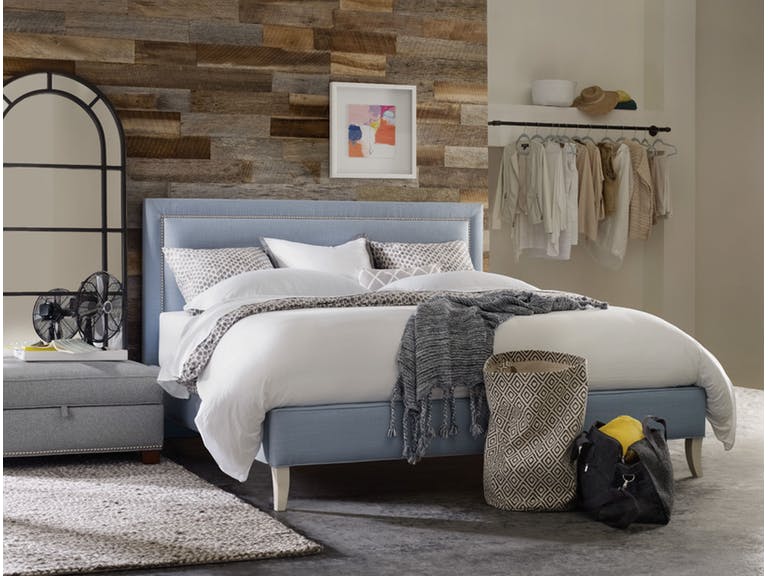
Hooker Furniture Bedroom Nest Theory Finch 62in King Upholstered Bed: See how this room was personalized? The addition of a hanging rod for those clothes and the painting above the headboard all made a difference.
If you feel that your home is not that homey at the moment then you know that a makeover project should be done soon. If your house feels empty or lifeless, then you should rush this project.
Common this-does-not-feel-welcoming issues can be addressed with simple DIY makeover projects. The problem could be because the space still looks and feels bare because of the lack of furnishing or that there are just too many furniture pieces cramped into a single room.
No matter what the issue, rest assured that there is a solution that’s waiting for you.
Update the Paint
One of the leading makeover needs is for the house to be painted with a fresh hue. Find a color that works well in your space. Wide, open spaces can be warmer and homier with the right dark or earthy colors. Smaller spaces could use a little brighter and lighter hues.
A new palette could instantly brighten up any space. It could also make the living spaces more exciting. If you choose, say, white or any neutral-colored paint, though, make sure that your area does not look too clinical.
To deviate from the all-neutral color palette, you can have one wall painted with a more vibrant color. This will serve as your accent wall. Here is where you can also feature your beautiful artworks and special family photographs.
The accent wall could also have the same backdrop paint though it can be fitted with wood print vinyl tiles. This is an economical way to create an accent wall where you can, again, display your prized artworks.
Rearrange Furniture Layout
Most designers also opt to rearrange the furniture pieces. This is so space will be maximized. A good way to begin when you have cramped space is to have just the bare essentials. For instance, the living room can just have a comfortable couch and a television console.
If you want to spend more lounging time in your living room, then you can invest in a bigger, longer, and comfier couch. There are couches that can accommodate four people or more. Add some personal touches to the living room by having a coffee table in front of your couch. You can also place a credenza right in front of that accent wall which you painted just days ago.
Optimize Space
It is also wise to take advantage of every inch of space in your house. There is often a blank space between the dining and living areas. Turn that void into a lovely spot. Place two accent chairs, an area rug, a lovely TV console in that area.
This will serve as your informal lounging area. To create a visual distinction from the rest of the living space, have this spot painted with a lighter or a slightly darker color. It depends on what color palette you originally chose.
When this spot is properly set up, you will have the perfect spot for your family’s accouterments.
Fitting the Puzzle Pieces
Decorating a house to a home is like playing with puzzle pieces. You just have to be patient in matching and not matching accent and furniture pieces. Learn which pieces should be placed inside the living room and take out any that do not look good inside the other rooms.
Think of ways that you could make your home a pleasant home to look at. Experiment with proportions. A large, spacious spot could be filled with equally bulky furnishings placed at the right spots.
On the other hand, a space that does not have a physical division could be defined with proper furniture layout.
Tags: customized home, livable home, lived-in appeal, McCreerys, McCreerys Home Furnishings, personalized home
Posted in Interior Design 101, Interior Design Elements | Comments Off on Transitioning from House to a Home
Thursday, September 21st, 2017
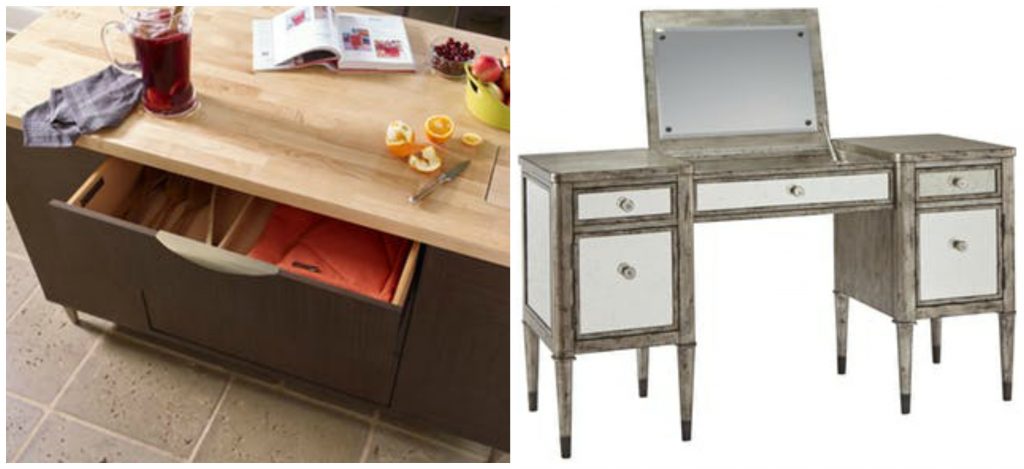
Wood furnishings must be well-maintained when used inside bathrooms or kitchens. From left to right: Rachael Ray Home by Legacy Classic Furniture Kitchen Island Top 6020-190-T and the Fine Furniture Design Bedroom Madeline Vanity 1586-138.
There are many decluttering and cleaning tasks that you can postpone but when your home is pestered by household molds, then you had better roll up your sleeves and see what needs to be done. Molds can cause a plethora of health issues and they can even destroy the place where they are growing on.
Molds are fungi spores that commonly float on air. They then cling to surfaces that are damp. There, they grow and then gradually consume the very surface where they have been residing at. The key to a mold-free environment is to do the cleaning even before molds take root.
More on Molds
Molds are able to produce allergens that cause allergic reactions in a few people. Some of the indicators include hay fever-like symptoms. What’s worse is that not all biocides or chemicals can kill molds. In fact, there are cleaners that are not able to annihilate the mold population and these end up causing more allergic reactions.
Apart from killing the mold, it pays to have them removed. Here are some cleanup tips –
Find Their Hideouts
The most common homes for molds include leaky plumbing, roofs, damaged floors, and even indoor humidity can lead to molds on your furnishings. Water and flood damages also often cause mold growth in just under 24 hours.
Just think of any place in your home where it is dark, damp, and unventilated and you already know the potential mold-forming zones. These are areas where water often travels including plumbing arteries, drains, crawl spaces, and walls that have plumbing from the ground bathroom to the bathrooms on the upper floors.
Mold Hot Spots
Regions that are also humid or damp tend to be the best spots for molds to grow. Arid areas are still not immune, though. Even buildings that you think are tightly sealed can still be improperly ventilated which can still cause moisture and eventual mold buildup.
Clean up cellars, basements, those areas behind or under your fridge, underneath the bathroom and kitchen sinks, behind walls, around your air-conditioning units, under your carpets, and around the window sills.
Mold can also go undetected behind wallpapers. Sometimes, it takes mold inspectors to find where they are hiding. Glue can actually act as a food source to molds.
What Is Mildew?
Mildew is a kind of fungi coating that forms on any damp surface. This generally grows in flat patterns and looks powdery gray or white.
Mold is much darker in color and is usually green or black. Unlike mildew that just grows on the surface, molds tend to take root and penetrate the surface where they’re at.
Time to Clean Up
If the mold buildup is on ceiling tiles, carpeting, wallpaper, drywall or any porous surface, then make sure that the item gets thrown right away. These materials make it impossible for you to totally remove the mold buildup especially when it has already taken root.
Molds also cultivate on the backside of your drywalls, also in wall cavities. Since this is so, it takes time before you see the problem on the surface.
DIY Mold Cleanup
Bleach. Mix a cup of bleach with ample water to concoct a gallon. Pour the solution to spray bottles and spray on those mold-infested areas. You can also use a cloth or sponge for your bleach solution.
Vinegar. Do not dilute. Use full-strength and spray onto the moldy surfaces. Wipe off with a clean cloth.
Baking soda. Make this baking ingredient your new best friend since it is renowned for its cleaning properties. For molds, mix half a teaspoon of baking soda with a gallon of water. Mix then scrub onto the moldy surface.
Rinse with water.
Tags: cleaning mold and mildew, McCreerys, McCreerys Home Furnishings, mold and mildew buildup, mold cleanup
Posted in Home Maintenance, Interior Design 101 | Comments Off on Say Goodbye to Molds: Your DIY Project
Wednesday, September 20th, 2017
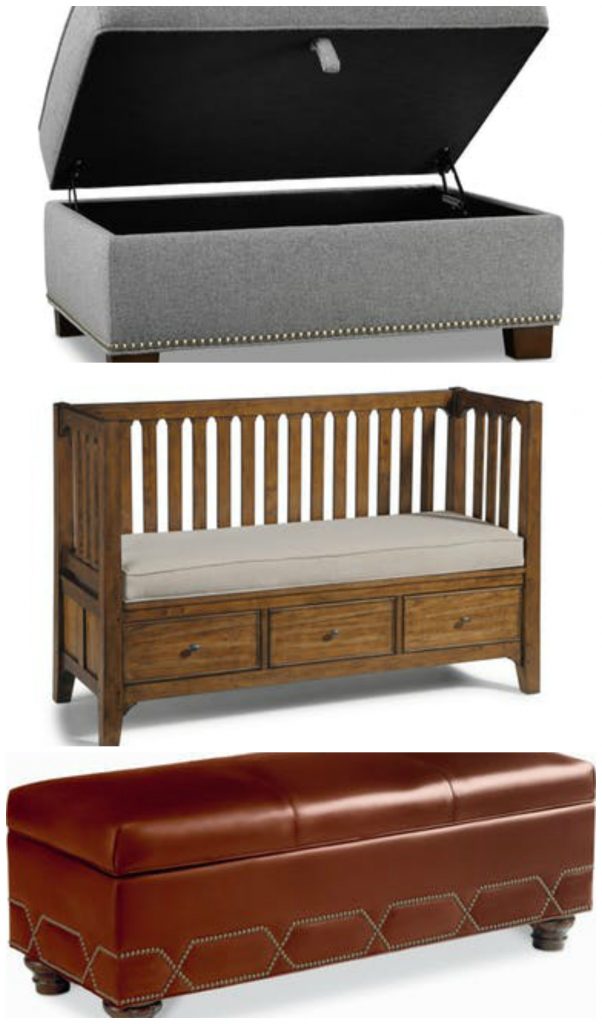
Top to bottom: Hooker Furniture Bedroom Nest Theory Storage Bench 101-94019; Flexsteel Living Room Storage Bench W1434-021S; and the Thomasville Living Room Sojourn Storage Bench HS1646 18ST.
Cleaning up mess is not – you must admit it – the easiest and most fun thing to do. Yet everyone loves a clutter-free space so you also know that it is something that you have to do one way or another. Finding the energy and time to do the project, though, is a totally different topic all together.
So what could you do to hasten decluttering so you can enjoy its benefits soon?
Match and Toss
Do you have a pile of Tupperware containers inside your cupboards? This is the time to pull them all out and to start matching the lids to their respective containers. Check for other items inside the dishwasher as well. Store the matched containers and lids and give away any excess pieces that no longer fit into the cupboards.
Stack the matched pieces neatly then go back to the containers that do not have lids. Have those pieces recycled.
Unload ‘Em
Your next 10-minute decluttering project is to dig into the fridge and look for those messy condiments which have been stuck there. These are those spices and condiments which you did not like but ended up storing anyway.
It’s time to unload the fridge and to let go of these bottles. For those that you decide to keep, just wipe the wipe the bottle bottoms with a wet sponge before you put them back in. If you have extra time, group the bottles according to taste – the sweet ones go together while the spicy ones have their own space inside your refrigerator.
Check the Utensils
Your third project is to check out the utensils in your kitchen. Do you use each item daily? Or are most just stored there and remain unused for many months now?
See if you really need all 15 of your spatulas or turners. If not – and frankly you really need one or two – then dispose of the others. If there are utensils that you want to still keep due to sentimental value, then just store them in a different bin. That spot near your stove should be reserved for the ones that you regularly use for cooking.
Oh, the Pen Mug
Yes. That mug where you store all of your pencils and pens. Check if all of your pens still have inks. And for those that are lying around in the kitchen, the dining room, or even the living room, it’s time to scoop them all up and place them inside that mug.
That mug should be their only home when they are not in use. If you have tons of pens, then you might want to give away or donate some of them. There are various non-profit organizations that would be more than happy to receive your lovely pens.
Organize the Socks
Now open your drawers and check out how the socks are stored. Pull out each pair, match the unmarried pieces and inspect each for holes and damages. Fold the matched pieces then return them in your drawer.
Before you decide to throw the unmatched pieces, try checking for their partners in your laundry area. Once you confirm that some do not have mates, then just put these pieces to your recycling bin. Once you have a mount, you can then find a textile recycler in your area where you can donate them.
Organize Shower and Laundry Supplies
Check your shower area then pull out all bottles of shampoos, shower gels, and such. Those that you use daily need to go to your shower caddy. The other bottles that are used less frequently can be stored in a drawer or a bathroom cabinet.
Give away the products or throw away the contents and have the bottles recycled. While you may think that you’re wasting resources, think again. Instead of taking up valuable space in your cabinet, just let them go.
Do the same with your laundry detergents and stain removers.
Tags: declutter, decluttering, decluttering tips, DIY decluttering tips, McCreerys, McCreerys Home Furnishings
Posted in Home Maintenance, Interior Design 101 | Comments Off on Decluttering Tasks in Under 10 Minutes
Tuesday, September 19th, 2017
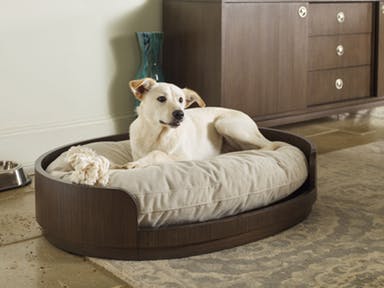
Rachael Ray Home by Legacy Classic Furniture Accessories Dog Bed w reversible Cushion 6020-600
If you are interested in reading this article, then you are probably a fur parent (the term that is now used to describe a pet owner). Of course, you cannot imagine a life without your fur baby but nor should you compromise your home’s interior design. So, how do you actually design a pet-friendly home?
Durable Floors
It always begins with durable flooring. Pets have paw prints and nails. For both these, you will need a hard-surface material that will not be affected by your pets’ activities and vice versa.
Options like stone, ceramic or laminates are a lot easier to maintain compared to carpets. Such materials also keep the coolness on the floor during the hottest weathers. This is also a consideration for fur parents who take care of pets with long and thick fur.
While ceramics and laminates are okay, just make sure that they are not polished or your dogs and cats would slip. The addition of rubber mats or area rugs might become a necessity when the floors become too slippery.
You might be thinking of hardwood floors, too, but since you’re dealing with wood versus slobber, dents, and scratches, it is better to stay with the laminates and porcelain choices.
If you really have to use hardwood flooring, then pick the hardest varieties such as mahogany or oak. Stay away from fir or pine. Also, if you want to preserve the beauty of your traditional hardwood floors, then trim your pets’ nails regularly.
Protect the Walls
One of the most affordable way to protect your walls from your pet friend is to paint it. Pets tend to rub against walls so reserve those beautiful wallpapers for rooms that don’t get visited by your furry family member.
Pet Area
You should be able to designate a specific area for your pet. Sea grass or sisal mats are durable enough to withstand pet traffic. And when they’re too used up, all you have to do is to toss them away and buy a new one.
It’s mess-free, easy neutral territory for your pet.
Furnishings and Your Pet
When it comes to fabric upholstery, make it a point to pick those that are easy to maintain. Consider carefully the sofas and chairs that you will buy for the rooms in your home. Chenille and velvet are major no-nos since they highlight fallen pet hair.
If you have to use silk, then be sure to put them on areas that your pet cannot reach such as the windows. Tweed is also not a great material to use.
If you want stain-resistant materials, then opt for canvas, denim, or synthetics. Fabrics such as Crypton® are better able to resist moisture, germs, and odors which are all a part of pet ownership. You can also choose to have fur-toned fabrics. This is a technical way of decorating around your furry family member.
For best results, dress up the fur-colored sectional with fun accent pillows (also with easy-to-clean covers).
Of course, you also need to veer away from white fabrics. Instead, pick woven fabrics with textures, darker colors, and patterns. These should be able to camouflage pet hair and stains.
If designer fabrics are what your heart truly desires, then invest in washable covers, the slip-type. A lot of designers also say that there are white slipcovers that you can now wash and bleach before visitors arrive.
If your pet really loves to sit with you, then make a mental note of where he usually lounges. Put a throw on the chair backs and cushions where your pet loves to sit. This way, the furniture itself will be from stains.
Or you can also train your pet to steer clear of your furniture.
Tags: home with pets, McCreerys, McCreerys Home Furnishings, pet-friendly home
Posted in Interior Design 101, Interior Design Elements, Special Rooms In Your Home | Comments Off on Interior Design for Pet Lovers’ Homes
Monday, September 18th, 2017
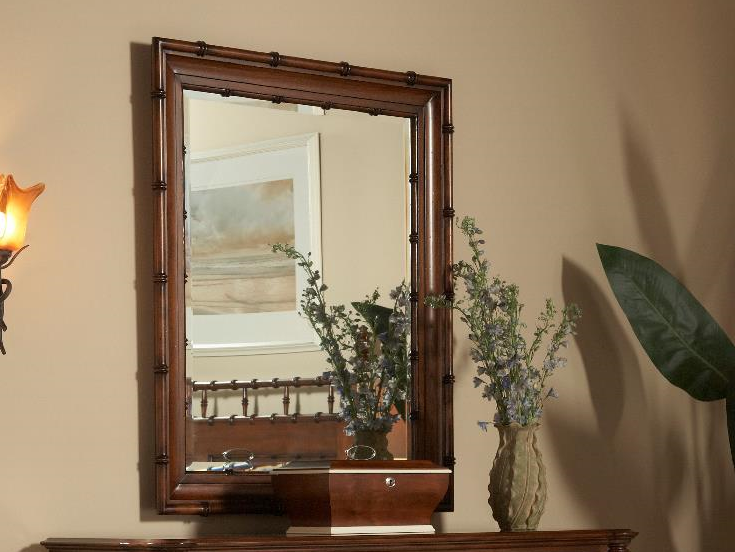
The Summer Home Mirror can be a unique addition to your newly-renovated bathroom.
Bathrooms are, without a doubt, one of the most popular rooms that are being renovated. They fall next to the kitchens when it comes to the number of projects that are done yearly.
Homeowners who sign up for bathroom renovations want these rooms to be not just functional but also stylish. Some even want luxurious finishes for their spa-like creations. You might even be more surprised to find out that homeowners who have bathtubs added in their bathrooms end up rarely using them.
A Question of Budget
One of the top considerations for bathroom renovations will always be the cost. Of course, the budget varies as this depends on many factors such as the region where the renovation will take place, the labor cost, the materials used, as well as the type of finishes chosen by the homeowner.
Typically, the budget for a master bath renovation is anywhere from $10,000 to $25,000. Many are willing to spend more but the majority of the projects fall into the bracket that’s given here.
Reasons for Renovating
There are many reasons why a homeowner would opt to renovate his bathroom. The most common are –
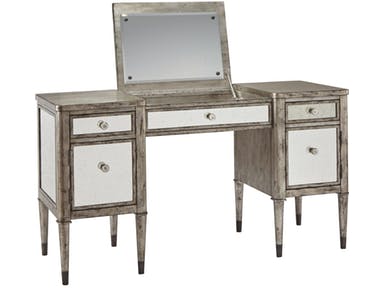
Fine Furniture Design Bedroom Madeline Vanity 1586-138
Most Upgraded Features
Most bathroom renovation projects are even thought of in the first place because there are major features that need to be replaced. Here are some of these –
Some homeowners who have added these features end up adding some specialized features as well. The master bathroom shower can have these extras –
Those who do update their showers end up with the more high-tech type. Homeowners also like adding mood lighting.
Popular Wall Finishes
Why shouldn’t you just settle for painted walls? While paint is alright, you must consider that moisture is your main enemy inside the bathroom. Moisture, when unchecked, could devastate some materials.
Vinyl wallpapers (they now come in peelable versions) are a hundred-percent waterproof. They are also easy to install since you can just apply and reapply according to your preference. What’s greater news is that they now come in the most sophisticated designs.
What’s a bathroom without you thinking of porcelain or ceramic tiles? These two are popular choices for a reason. First, they are also waterproof.
Second, ceramic and porcelain tiles offer a classic look to your bathroom. Did you know that ceramic has been used since the ancient Romans’ time?
The Overall Design
At the end of the day, the look that you consider for your bathroom is your own choice. A change in style could be because you would want your bathroom to become more stylish, spa-like, or merely to better reflect who you are.
An energy-efficient bathroom won’t be a bad idea at all, too.
Tags: bathroom renovation, bathroom style, McCreerys, McCreerys Home Furnishings
Posted in Bathroom Design, Interior Design 101, Interior Design Elements | Comments Off on Bathroom Renovation: A Bird’s Eye View
Saturday, September 16th, 2017
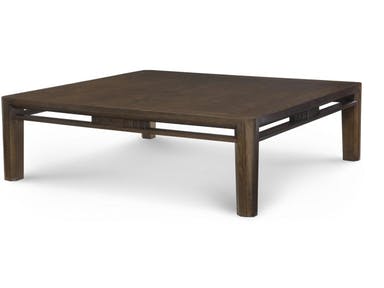
Century Furniture Living Room Akimi Coffee Table AE9-601
Did it ever occur to you that most Japanese homes are actually small? While this is so, you would not hear Zen enthusiasts ever complaining of not having ample space. And even when these homes are situated close to one another, natural light, safety, and privacy are all still kept intact.
Most urban Japanese homes are not single-family homes. In fact, their apartments are small yet you will still see the beautiful traditional features like step-up entryways and the deeply-relaxing soaking tubs.
Even Westernized Japanese style homes have one Japanese room complete with tatami flooring. This means that the traditional Japanese elements are still widely incorporated by many Western architects. The essential concepts are the following –
Gates
When you go to Japan, one of the things that you would immediately notice are the gated entryways. This is because many residential streets do not have sidewalks. The line of demarcation, therefore, rests on the property’s gate.
The gate is also traditionally roofed especially in Kyoto, Japan. It is also common to find cherry trees in the garden that greets the visitors once they are welcomed into the property.
Walls
Since there are gates, naturally, there are walls. The Japanese always make their properties secure and private so they set up walls right at the property lines. The most common material is the concrete block whether the home is situated in a quaint village or in a city.
There are also bigger homes with stone walls that are topped with wooden fences. There are even those that are topped with actual trees.
Tiled Roofing
Japan is constantly bombarded with rain, hence, their roofs are designed for water drainage. The broad eaves allow the opening of exterior doors without letting in unwanted rain splashes.
Step-Up Entryway
This is that transitional space between the interiors of the home and the outdoors. This is that very spot where the shoes are exchanged for the slippers. Called the genkan, this is also where a shoe cupboard can be placed also some decorative objects like art, flowers or ceramics.
This area may also face the tokonoma or the alcove where artwork or scrolls are prominently displayed. Ikebana or flower arrangements may also be featured there.
North-South Views
Japanese houses are often set up north-south, meaning, the house gets a steady amount of sunlight during the day. The outdoor views are often mountains or lovely water features.
Would you believe that natural light is actually a human right in Japan?
Sliding Doors
The lovely louvered doors are also essential parts of every Japanese home. These also feature slatted windows which are common in live-work homes.
Wood and Straw Everywhere
No Japanese home can be called such without an element of wood in it. Japanese homes often stain their wooden features but they never paint them. It is crucial to feature the wood grain insomuch that they can even feature an entire tree as a roof beam.
Another important material in Japanese interior design is straw matting. On any tatami flooring, a type of grass called igusa is woven. This is used to keep the house cool during the summer months and warm during winter.
Straw matting can be a tad costly but they are known to last for many, many years. Remember how the Japanese never use their dirty shoes indoors? This is the reason why the tatami flooring remains undamaged for many years.
You can also follow this same concept. To add to the Zen atmosphere, you can also bring in standard rectangle mats. Get the ones that have black cloth or brocade edges.
Multi-Purpose Rooms
Traditional Japanese homes also have multiple purposes for every room. The futon or traditional bedding can be folded during the day to reveal a larger room where people can relax, sit or even dine.
Tags: Japanese design elements, Japanese interior design, Japanese interiors, Japanese style, McCreerys, McCreerys Home Furnishings
Posted in Green Living, Interior Design 101, Interior Design Elements, Interior Design Themes | Comments Off on Traditional Japanese Habitat: Where Privacy, Nature, and Harmony Combine
© McCreery's Home Furnishings | All Rights Reserved | Privacy Policy